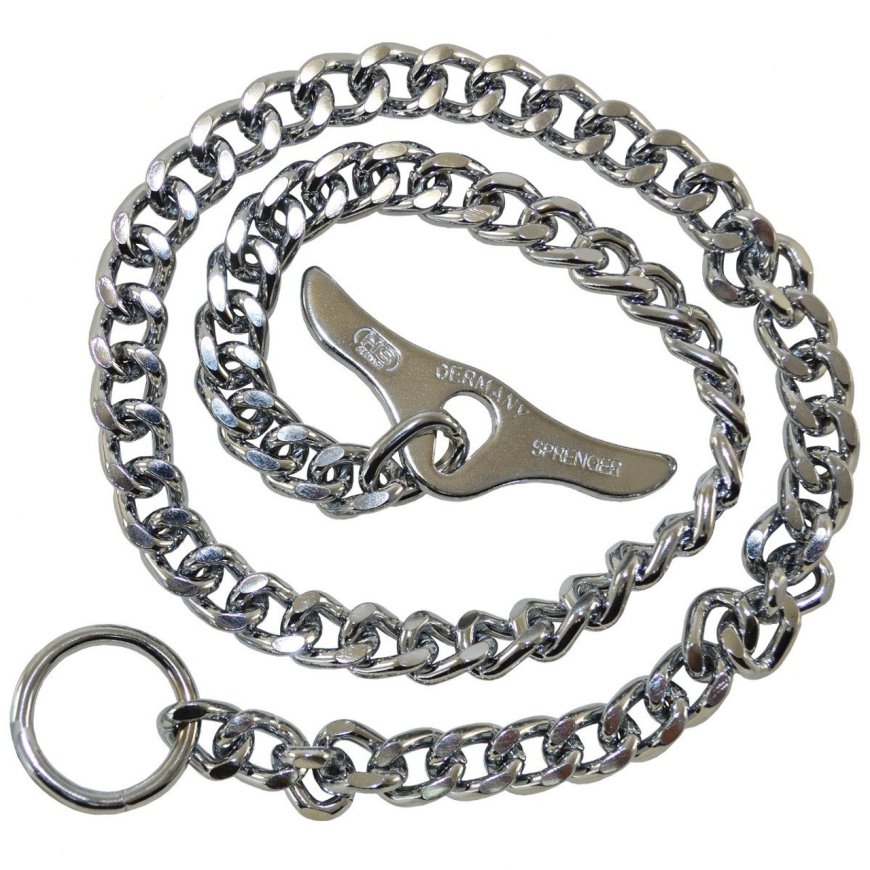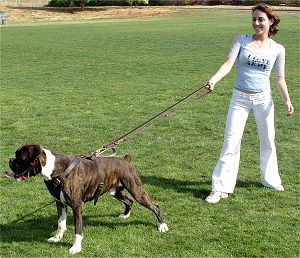Pet Choke Chains for Behavior Correction: An In-Depth Guide
Learn how pet choke chains for behavior correction can help improve your dog's training. Discover safe methods for effective obedience.

When it comes to training pets, particularly dogs, one tool that often comes up in discussions is pet choke chains for behavior correction. These collars have been used for decades and remain a popular choice among many trainers. However, their effectiveness and safety are often debated. This article explores what pet choke chains are, how they function in behavior correction, and the best practices for their use, along with alternative training methods that may provide better outcomes.
Understanding Pet Choke Chains for Behavior Correction
The Pet Choke Chains for Behavior Correction are training collars made of linked metal or nylon. Their design allows them to tighten around a dog's neck when pulled, creating a sensation that is intended to deter undesirable behavior. The underlying principle is simple: when a dog pulls on the leash or behaves aggressively, a quick tug on the choke chain delivers a correction. This technique aims to prompt the dog to associate its behavior with the immediate consequence of the correction, thereby encouraging better behavior in the future.
How Pet Choke Chains Work
The mechanism of pet choke chains for behavior correction is straightforward. When the dog pulls or misbehaves, a gentle tug on the chain tightens around its neck, providing feedback. This feedback should ideally serve as a reminder for the dog to refocus its attention. However, it is crucial to note that the goal is not to inflict pain but to create a mild, momentary discomfort that reinforces training commands.
The Role of Pet Choke Chains in Training

Pet choke chains are often employed in various training situations. They can be particularly useful in controlling hyperactive dogs during walks, correcting aggressive behaviors, or improving responsiveness to commands. Their ability to provide immediate feedback is one reason they are still widely used by some trainers.
Situations Where Pet Choke Chains Are Effective
In scenarios where a dog exhibits problematic behaviors, such as excessive pulling on the leash or lunging at other animals, pet choke chains can serve as a corrective measure. For instance, if a dog begins to pull, a quick tug on the choke chain can redirect its attention back to the owner, reinforcing the idea that pulling is not acceptable. This method allows trainers to maintain control in potentially chaotic situations, promoting a more enjoyable experience for both the dog and owner.
Proper Use of Pet Choke Chains for Behavior Correction
Using pet choke chains effectively requires knowledge and care. It is essential to approach this training method with the right techniques to ensure the safety and well-being of the dog.
Fitting the Choke Chain Correctly
One of the most critical aspects of using pet choke chains for behavior correction is ensuring that the collar fits properly. A choke chain that is too tight can cause injury, while one that is too loose may not provide adequate control. The collar should fit snugly but still allow for two fingers to slide between the chain and the dog’s neck. Regular checks are necessary to ensure the fit remains appropriate, especially as the dog grows or gains weight.
Timing and Consistency
Timing is crucial when delivering corrections with pet choke chains. Corrections should be given immediately when the undesirable behavior occurs, helping the dog make the connection between its actions and the correction. Consistency is equally important. If a dog receives mixed signals about what behavior is acceptable, it may become confused, leading to frustration for both the dog and owner. A consistent approach helps reinforce the desired behavior over time.
Short Training Sessions
Training sessions utilizing pet choke chains should be kept brief to avoid overwhelming the dog. Aim for sessions that last no longer than 10 to 15 minutes, particularly for younger or less focused dogs. Ending sessions on a positive note, with praise or rewards for good behavior, helps maintain the dog's interest in training and builds a trusting relationship between the dog and owner.
Pros and Cons of Pet Choke Chains for Behavior Correction
While pet choke chains can be effective, they also have potential downsides that must be considered before use.
Advantages of Pet Choke Chains
The primary advantage of using pet choke chains is their ability to deliver immediate feedback. This direct communication can help dogs understand the consequences of their actions more quickly than some other training methods. Additionally, choke chains can help establish clear boundaries and expectations, which may lead to improved behavior over time.
Disadvantages of Pet Choke Chains
Despite their benefits, pet choke chains can pose risks, particularly if misused. Improper use can lead to physical injuries, including damage to the neck or throat. Furthermore, some dogs may develop anxiety or fear associated with the choke chain, leading to behavioral problems rather than correcting them. It is crucial for owners to monitor their dog’s reactions closely and adjust their training methods if any signs of distress appear.
Alternative Training Methods to Pet Choke Chains

For pet owners who are uncomfortable using choke chains or have dogs that may not respond well to this training method, there are several alternatives to consider. These options focus on more positive reinforcement techniques that can achieve similar results without the associated risks.
Harnesses
Harnesses are an excellent alternative to pet choke chains for behavior correction. Unlike choke chains, harnesses distribute pressure evenly across a dog’s body, reducing the risk of injury to the neck. Many harnesses come with front clips, which can help redirect pulling by guiding the dog back towards the owner. This method encourages better walking habits while ensuring the dog’s safety.
Head Collars
Head collars are another effective option for controlling a dog’s behavior. These collars fit around the dog’s muzzle and neck, allowing for better control without putting pressure on the neck. When a dog pulls, a head collar gently redirects its head, discouraging pulling and promoting better walking manners.
Positive Reinforcement Training
Positive reinforcement training focuses on rewarding desirable behaviors rather than punishing unwanted ones. This method fosters a more enjoyable training experience and helps build a strong bond between the dog and its owner. Treats, praise, or toys can be used as rewards, encouraging the dog to repeat good behaviors in the future.
Conclusion
Pet choke chains for behavior correction can be effective tools when used responsibly and with proper techniques. They provide a way to communicate clear boundaries and can help modify undesirable behaviors in certain situations. However, potential risks associated with choke chains make it essential for pet owners to be cautious and attentive to their dogs’ responses. Exploring alternative training methods may also lead to more positive outcomes, ensuring both the well-being of the dog and a harmonious relationship between the pet and owner.
FAQs
Q: Are pet choke chains suitable for all types of dogs?
Pet choke chains may not be suitable for all dogs, especially those that are anxious or have pre-existing health issues. It is essential to assess your dog's temperament and consult a professional trainer if you are unsure about using this training method.
Q: How can I tell if my dog is responding well to the choke chain?
A positive response includes the dog showing improved behavior and increased attentiveness to commands. If your dog exhibits signs of fear or anxiety towards the choke chain, it may be wise to consider alternative training methods to promote a more positive training experience.

 authors
authors